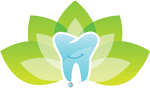Does the Protection Offered by Dental Sealants Outweigh Any Risks Involved?
Although brushing the teeth is an effective method of preventing cavities, getting an application of dental sealants on children’s teeth may be an excellent option. Reports from the CDC published recently tout the advantages of this relatively straightforward and painless procedure for children.
Dental sealants in Toronto, ON , are thin coatings painted on the teeth as a protective barrier against cavities. The painless procedure is affordable at around $ 30-$ 60 per tooth, although some discount or insurance plans can further reduce prices.
Considering less than 50 percent of children have tooth sealants, the trend for dental sealants is still gaining traction. However, dental sealants are safe as they have been useful for over four decades.
What Does Research from the CDC Reveal?
Dental sealants can prevent cavities by up to 80 percent for two years after an application, states the CDC report. The protection continues on 50 percent of holes for up to four years while they are retained in the mouth for about nine years.
Dental sealants for kids are prevalent in six and 11-year-olds, but children from low-income families are 20 percent unlikely to have sealants on their teeth, unlike children from higher-income families. School-age children without sealants are susceptible to cavities by three times more than children with sealants. The dentist in Toronto, ON, calls dental sealants the most non-invasive and conservative treatment in dentistry. However, they also mention monitoring the adhesives is essential during regular dental exams and cleanings. The monitoring is critical to ensure the sealants do not wear off. The placement of the bonds is technically sensitive, and practitioners that do not apply them correctly do not have excellent success rates.
Why Should Children Get Dental Sealants?
Children often report lost time in school due to tooth decay, which interferes with sleeping, eating, and other regular activities. Besides preventing cavities, sealants ensure the teeth remain intact. After a tooth is drilled and filled or perhaps restored or extracted, the natural structure of the tooth is compromised. The compromised tooth structure involves lifetime expenditure for maintaining the restored tooth.
Some downsides are associated with dental sealants. Prime among them is the need to have them be applied if they fall off. Sealants can also chip or wear off. During the replacement, drilling is required for any excess material, or it must be removed with a scaler.
Some people have apprehensions about the environmental exposure to synthetic estrogens like BPA. However, they must understand that salivary BPA levels from exposure to BPA are the highest during the initial three hours after the dental sealants procedure. The BPA levels return to baseline within 24 hours, and the blood serum levels of BPA haven’t been detected in clinical studies. Therefore more research is essential to confirm whether dental sealants are detrimental to children.
The Long-Term Benefits of Dental Sealants
Dental sealants can last for a long time if the technique used during the application is perfect. They don’t require replacements in many cases. Arlington dental recommends dental sealants for children developing new molars with grooves called pits and fissures to have them sealed immediately after they emerge. Molars emerge at age six, 12, and 18. Packing baby or primary teeth is also possible if the child is old enough to tolerate the painless procedure. Children are required to hold their mouths open and sit still for a few minutes during the application.
Older adults can also consider dental sealants. So long as they do not request sealants for sensitive teeth, they also benefit from dental sealants for adults. As people age, their exposure to decay increases, so will the protective quality and biochemistry of their saliva with some medications over time. That said, we confirm adults are also suitable candidates for dental sealants. So long as adults do not have restorations or implants which renders the adhesives ineffective, they can consider having this protective barrier on their teeth to prevent them from developing cavities.
The protection offered by dental sealants is undisputed as they have proven safe and effective. Having dental sealants on children’s teeth prevents unnecessary expenditure and discomfort from tooth decay, cavities, and intensive dental treatments. Children with sealants are less susceptible to chronic infections familiar with over 60 percent of children in America and Canada. That said, the protection offered by dental sealants undoubtedly outweigh any risks that are touted by many people.

